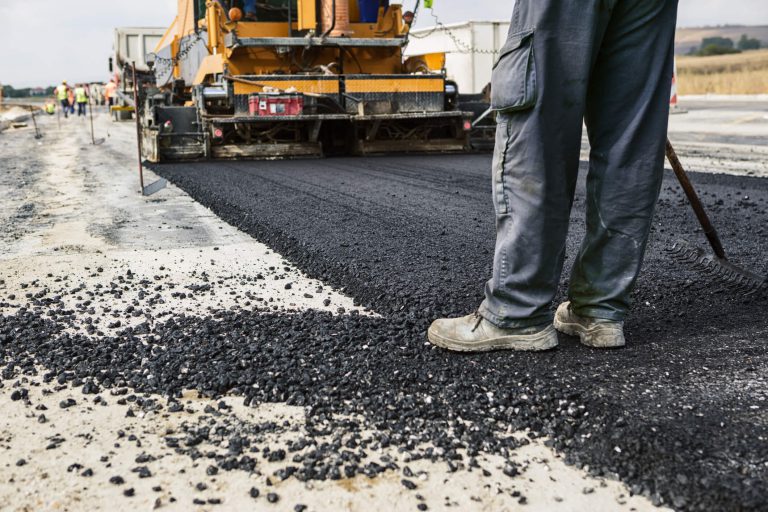Polymer Modified Bitumen Definition
Bitumen has been used for thousands of years and its importance as a valued engineering material continues to increase. The interest in the modification of bitumen using polymers, whether virgin, scrap or polymer blends, is intense. The last two decades, in particular, have seen an increase in the number of academic groups studying polymer-modified bitumen and correspondingly the peer-reviewed literature in the field has increased. Initially, studies on polymer modified bitumen (PMB) focused more on engineering and empirical measurements, e.g. ageing and softening point. However, in recent years a plethora of techniques have been employed in the study of the effect of the addition of polymers on a range of bitumen properties, polymer—bitumen morphology and polymer—bitumen interactions.
Polymer modified bitumen (PMB) is one of the specially designed and engineered bitumen grades that are used in making pavement, roads for heavy duty traffic and home roofing solutions to withstand extreme weather conditions. PMB is a normal bitumen with the added polymer, which gives it extra strength, high cohesiveness and resistance to fatigue, stripping and deformations, making it a favorable material for infrastructure.

Pavements designed and constructed for heavy-duty traffic and extreme weather conditions require specially designed engineered Bitumen Grades. By changing the characteristics of normal bitumen with the addition of a polymer, either they are of elastomeric nature or elastomeric, we succeed to obtain bitumen that allows the mixture to be more cohesive, with much more strength and significant higher resistance to parameters like fatigue and permanent deformations for road pavements.
PMB Applications
It is used for Wearing course & Binder course like Semi dense Bituminous Concrete (SDBC), Dense Bituminous Macadam (DBM) and Bituminous Concrete (BC)or Asphalt Concrete(AC).
PMB Advantages
- Greater Rigidity
- Better resistance to permanent deformation
- Higher Resistance to spreading cracks
- Greater water resistance
- Much higher durability
- Enhances life of periodical maintenance and overlays by about 1.5 times as compared to conventional Bitumen.
- Lower susceptibility to temperature variations.
- Higher resistance to deformation wear and tear.
- Low glass transition temperature which gives excellent performance properties of pavement at low temperatures.
- Stiffer blend reduces rutting and stability at high temperatures.
- Enhances Dimensional stability and strength of pavement.
- Improves abrasion resistance of pavementImproves abrasion resistance of pavement.
- Improves Fatigue resistance.
- Reduces Oxidation and aging resistance.
- Reduces structural thickness of pavement.
- Provides better adhesion between different aggregates.
- Delay cracking and reflective cracking.
Types of polymer modified bitumen
| Type | General Purpose or Use | Generic Examples |
| filler | Fill voids and therefore reduce optimum asphalt content Meet aggregate gradation specifications Increase stability Improve the asphalt cement-aggregate bond |
Mineral filler crusher fines lime Portland cement fly ash Carbon black |
| extender | Substituted for a portion of asphalt cement (typically between 20–35 % by weight of total asphalt binder) to decrease the amount of asphalt cement required | Sulfur Lignin |
| rubber | Increase HMA stiffness at high service temperatures Increase HMA elasticity at medium service temperatures to resist fatigue cracking Decrease HMA stiffness at low temperatures to resist thermal cracking (see Figure 2) |
Natural Latex Synthetic latex (e.g., Polychloroprene latex) Block copolymer (e.g., Styrene-butadiene-styrene (SBS)) Reclaimed rubber (e.g., crumb rubber from old tires) |
| plastic | Polyethylene/polypropylene Ethylene acrylate copolymer Ethyl-vinyl-acetate (EVA) Polyvinyl chloride (PVC) Ethylene propylene or EPDM Polyolefin |
|
| Rubber-Plastic Combinations | Blends of rubber and plastic | |
| Fiber | Improving tensile strength of HMA Mixtures Improving cohesion of HMA Mixtures Permit higher asphalt content without the significant increase in the drain down |
Natural: Asbestos Rock wool Manufactured: Polypropylene Polyester Fiberglass Mineral Cellulose |
| Oxidant | Increase HMA stiffness after the HMA is placed | Manganese salts |
| Antioxidant | Increase the durability of HMA mixtures by retarding their oxidation | Lead compounds Carbon Calcium salts |
| Hydrocarbon | Restore aged asphalt cement to current specifications Increase HMA stiffness in general |
Recycling and rejuvenating oils Hard and natural asphalts |
| Antistripping Agents | Minimize stripping of asphalt cement from aggregates | Amines Lime |
| Waste Materials | Replace aggregate or asphalt volume with a cheaper waste product | Roofing shingles Recycled Tires Glass |

